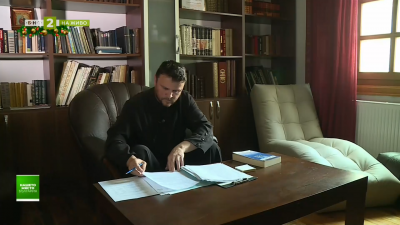Archaeologists from Varna discovered fully preserved statue from ancient Odessos (see pictures)
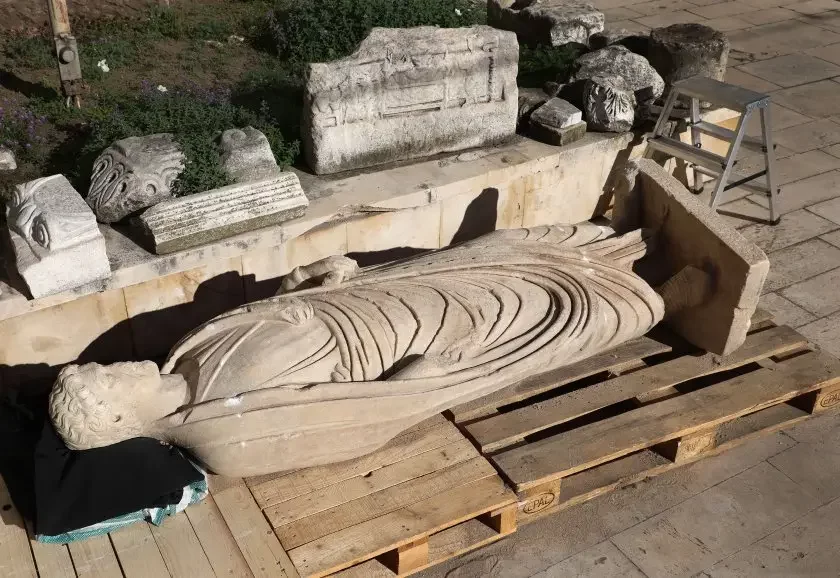
Archaeologists uncovered a fully preserved statue from the ancient city of Odessos. Archaeologists from Regional History Museum in Varna (Bulgaria's biggest maritime city) reported this afternoon, October 15, about this exceptional find during the excavations of the ancient city - a marble sculpture from the Roman era, slightly taller than a human height.
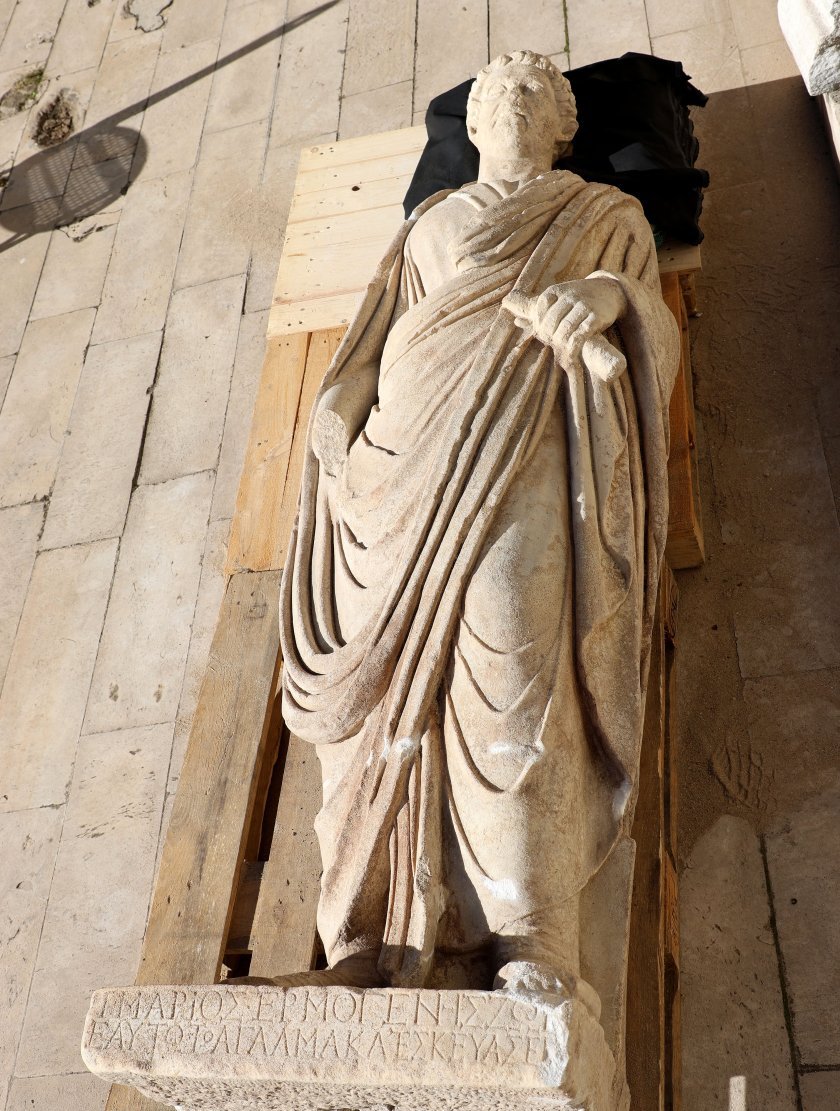
It depicts a middle-aged man with a short beard, dressed in a toga, with a scroll in his hand. On the front of the pedestal there is a well-preserved inscription, and from a preliminary reading it is clear the name of the person depicted: G(ai) Marius Hermogenes.
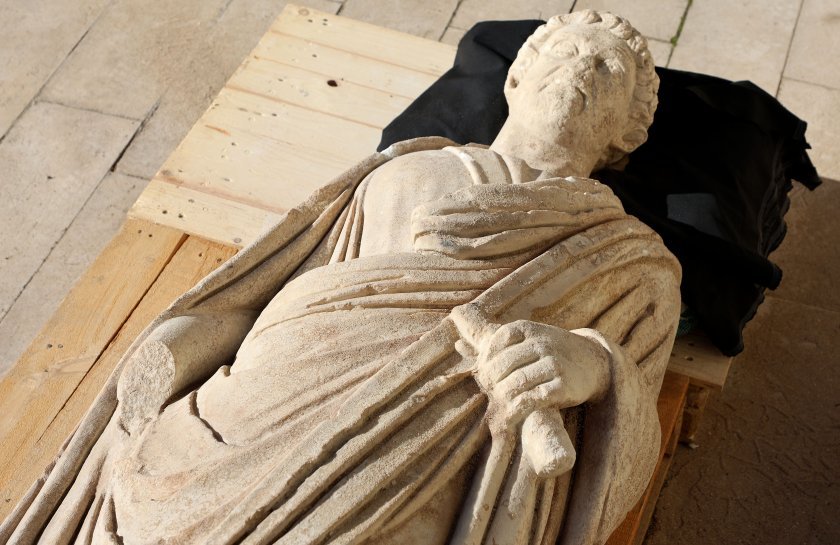
The only part that is missing is the wrist and there is some minor damage to the face, so restoration is needed before it can go on display, Archaeologia Bulgarica said on its Facebook page.
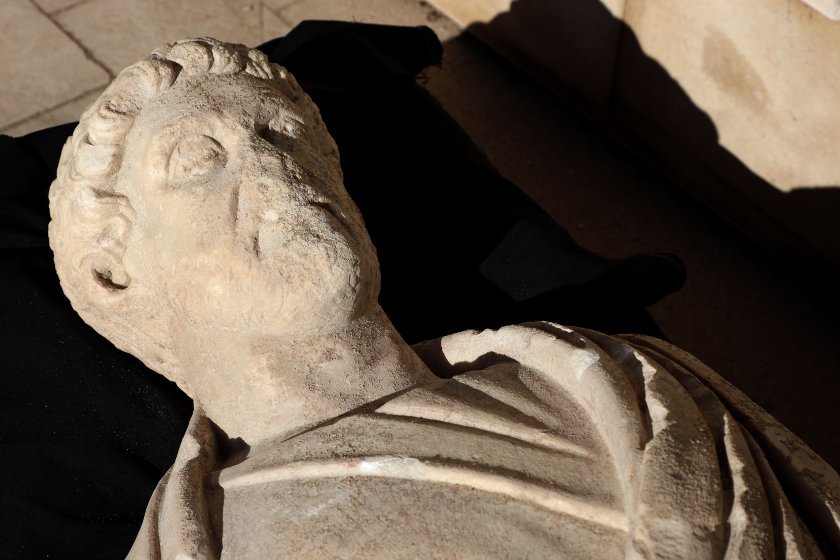
The statue was discovered during construction work in an area of sandy deposits, outside the walls of the ancient city. It was promptly reported to the museum by construction contractor Georgi Kraychev. The sculpture is believed to be from the end of the 2nd and the first half of the 3rd century.
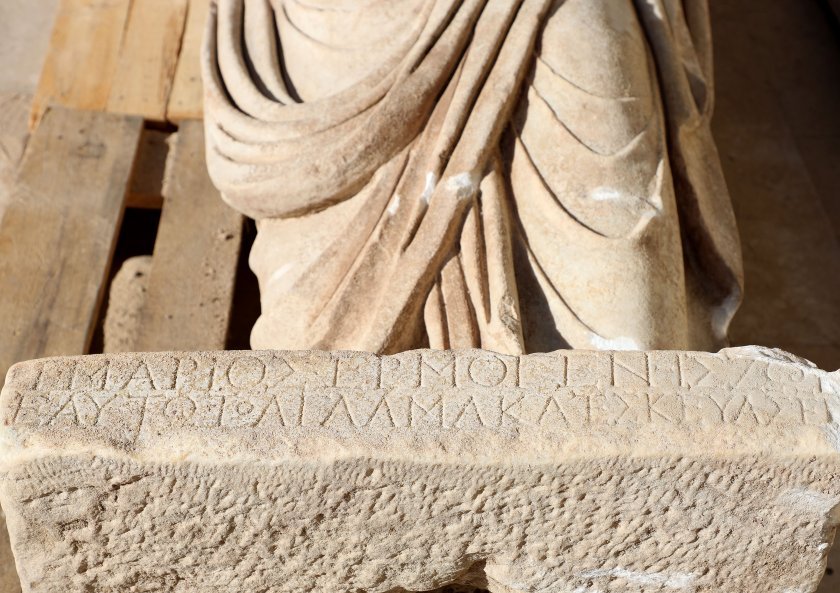
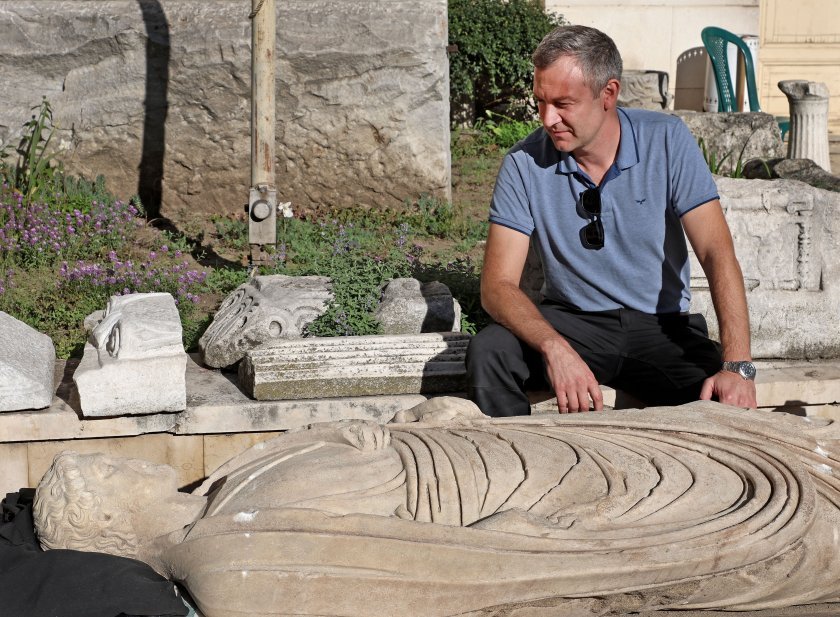
Images by BTA
***
The present-day city of Varna, Northeastern Bulgaria, originated as a settlement named Odessos (Ὀδησσός) which was founded by Ionian colonists from Miletus around 600–550 BC. The Greeks established their colony on the site of an earlier Thracian settlement.
In 335 BC, Alexander the Great conquered almost the entirety of ancient Thrace, and Odessos became part of the Macedonian Kingdom.
Odessos flourished most significantlly during the Hellenistic Age (end of III – I BC), when the city served as a starting point of troops of the successor of Alexander the Great – king Lysimachus (323–280 BC) who proclaimed himself king of Thrace. Big public buildings like temples, theatre, gymnasium (school for boys) and others were built during this period. Due to the increase of Thracian population in the city, a temple of the Thracian god-rider Heros Carabazmos and a temple of Artemis Phosphoros were built in II – I BC.
In 15 AD, Odessos became part of the Roman Empire, in the province of Moesia (later Lower Moesia), and became its main port on the Black Sea (Pontus Euxinos). Huge and ornate warm baths (Roman baths), the fourth largest in Europe, were built 7 000 square meters of land.
It was called Varna by the Ancient Bulgars after the First Bulgarian Empire conquered it in the late 7th century AD.
Get the latest news wherever you are!
Follow us on
Facebook
and
Instagram
Follow BNT’s YouTube channel
You can now also watch us on
TikTok
Find us on
Google News












